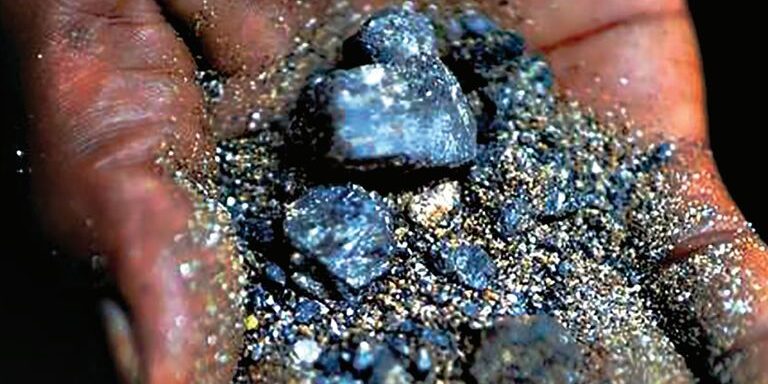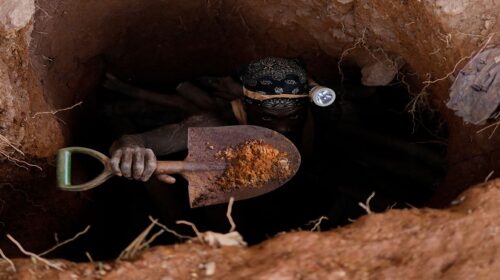Mineral Royalty in DRC Marred by Many Irregularities
Mining royalty in the DRC marred with minimum actions, payments unknown to the public, transparency suspicions, management leaves much to be desired in ETDs in greater Katanga
The mining royalty is undoubtedly the delight of the Decentralized Territorial Entities (ETD) which house mining companies exploiting copper and cobalt in the former Katanga. This is an innovation of the 2018 reform of the 2002 mining code. However, despite the improvements brought about by this law, transparency in the management of the funds of this precious sesame poses a problem while this royalty arouses all the envy. Many ordinary citizens are unaware of the existence of this fee and the allocation of funds. Investigation in the heart of deep Katanga.
Located a hundred meters from Avenue des Plaines, the Kampemba commune office (in Lubumbashi) is more remarkable than ever. This single-storey building, surrounded by former administrative buildings of the entity, has undergone major renovations thanks to the mining royalty paid by the mining company Chemaf (Chemical of Africa) headed by the Indian Shiraz Virji.
With the money he receives, the burgomaster Eric Lwamba proudly shows the city of Lubumbashi his achievements: vehicles for the evacuation of garbage, vehicles and offices in containers for the municipal police, all marked with the words “commune of Kampemba “. It also has a few kilometers of roads of which we will not know the exact length, not having obtained any successful meeting with the municipality during this investigation.
However, a few kilometers from this beautiful surrealist setting, the inhabitants of the Kigoma and Kabetsha districts , around the Chemaf mine, are unaware of the height of the amounts paid as royalties. Ilunga Sardou, chef de quartier Kigoma, for example, regrets that the population suffers the effects of mining activities without benefiting from the payments made. Comments confirmed by Françoise Kabund Yav, treasurer of the Kabetsha district development committee, another popular district of Kampemba: ” I am surprised to see that even the Tshiamilemba camp where a Chemaf mine is erected does not even have water. potable ”. The municipality has nevertheless succeeded in erecting at least two standpipes there.
Minimum actions, payments unknown to the public
In the other communes, in Haut-Katanga as in Lualaba, the mining royalty funds are used for the erection or repair of public buildings, mainly offices, roads and secure water wells. What several civil society activists criticize, denouncing the absence of a local development plan. Lucien Mbuyu, team leader Business climate and public-private partnership of civil society in Ruashi commune, deplores the fact that ” the commune only receives 10% “, the other 5% being diverted by a kind of agreement “Illegal” between local leaders.
Indeed, according to the mining code revised in 2018 (article 242) the distribution of the mining royalty provides for 50% of the total for the central power, 25% for the province, 15% for the decentralized entity and 10% for future generations. .
Against the accusations of mismanagement that target her, like other of her colleagues concerned by payments under the renovated mining code, the mayor of Ruashi where the company Ruashi Mining , a subsidiary of South African Metorex mining copper, is located and cobalt, proclaims transparency. ” We have controllers who come from different political institutions for the royalty money ,” she says, without indicating which departments these controllers come from. As with all his colleagues, including in Kolwezi in Lualaba, no figure filters out.
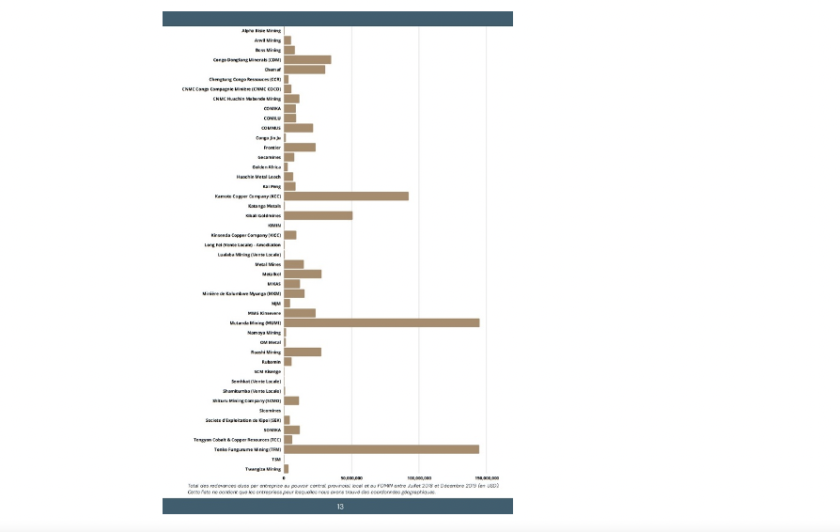
Mayor of the Annex commune in Lubumbashi where the mining companies CDM (Congo Dongfang Mining) and SOMIKA (Société Minière du Katanga) pay their royalties, Rémy Musense refuses to admit that the silence on these funds is suspect. And while his colleague from Ruashi clearly says: ” We were forbidden to talk about the mining royalty”, Rémy Musense assures us with a disturbed air: ” I cannot tell you precisely . We perceive them anyway and we remain transparent. For those who doubt, our works speak. We are not here to enrich ourselves ”. In short, of all the mayors does not want to mention the figures.
A suspicious opacity
In 2020, a parliamentary commission of the provincial assembly of Haut-Katanga concluded on management that “ leaves something to be desired ”, speaking of the mining royalty. According to statistics from the provincial division of mines, at least 15,706,102.48 US dollars were paid at the end of October 2019, on behalf of the royalty paid at all levels. In November it was $ 19,643,583.23 and some $ 18,027,254.18 million in December of the same year. Figures to consult under this link: congomines .
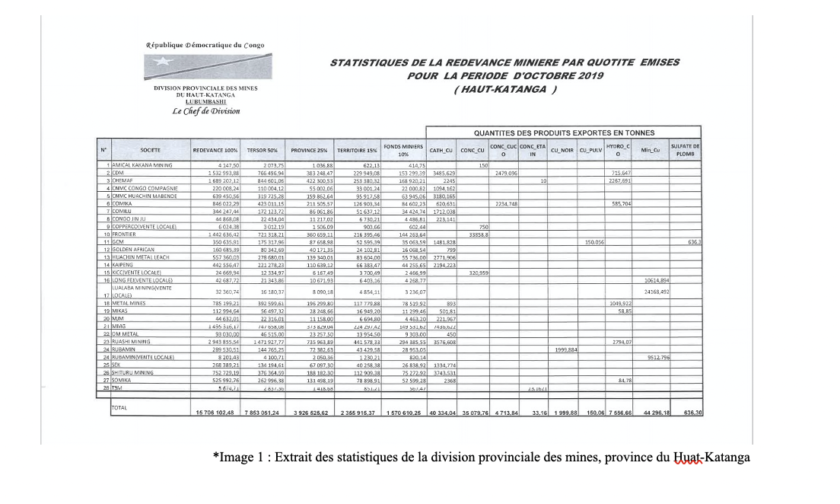
Civil society organizations are outraged that these funds are used to pay for vehicles and to arrange buildings, regrets a journalist from Kolwezi, speaking of the commune of Dilala and the chiefdom of Bunkeya. “Most of the inhabitants of this commune wanted to see schools, roads or even access to drinking water. And that causes frustration, ”he says.
Faced with this opacity, lawyer King Mushilanama, who heads the NGO Humanism and Human Rights, initiated a complaint against the Annex , Ruashi and Kampemba municipalities , in November 2019 in Lubumbashi. For ” A well that can be drilled for two or three thousand dollars, we are presented with a cost of over twenty thousand US dollars.” We understand that behind this allocation, there is a retro commission, a financial erosion, ”he lamented.
But his complaint, which had sparked an outcry in Lubumbashi, has curiously fallen into oblivion. Today, he assures that he has never been paid for his silence despite suspicions in this direction. “ The file was instead frozen by the provincial authorities in collaboration with the outgoing PG [Attorney General, note ] . Certain magistrates even told us: “the bakubwa [of Swahili: the chiefs, note ] played on the file” “he explains without admitting defeat:” The file continues “,
Agreements contrary to the law in Lualaba and Haut-Katanga
Even the Catholic Church has come out of its silence to denounce agreements that result in the embezzlement of funds. At the 4 th edition of the forum Alternative Mining Indaba in DRC in 2020, Archbishop Jean-Pierre Tafunga denounced the lack of control and impunity. ” Apparently we are doing what should not really be done “, indignant the Catholic prelate in a message read at the conference.
The ETDs, municipalities, territories and chiefdoms, started out from very small entities which, before the 2018 reform of the mining law, lived on small taxes (on displays at municipal markets, on bicycles, etc.) and under the almost overwhelming authority of the provincial administrations. For the first time, they have access to millions of dollars per month or per quarter.
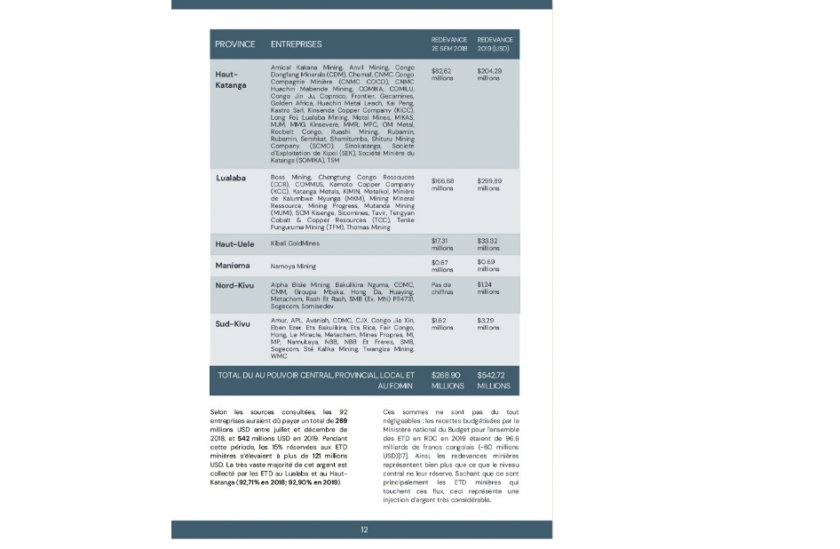
However, the municipalities, territories and chiefdoms signed secret agreements, initially, with the provincial administrations. Concurring sources assure that the province takes 25%, the city 10% (with regard to Lubumbashi and Kolwezi, for example), the provincial division of mines 5%, the provincial equalization fund 10%, etc. However, this convention is clearly illegal , since it is not recognized by law. Unfortunately, we could not otherwise verify this distribution with official sources, many refusing to comment on the question.
But for Jean-Pierre Muteba, an actor in civil society, this practice is an organized theft. ” Any distribution that does not respect the mining code and the mining regulations is an outright misappropriation of revenue ,” he warns . We have seen the birth of firms, huge salaries, vehicles,… but now it has to stop. The provincial authorities should tell us what this money is used for. And this is not a witch hunt. “
A “puzzle to be solved”
In its 2020 report, the Makuta ya Congo consortium “ which translates from Swahili as” Congo money “, describes” a puzzle to be solved “in terms of the management of the mining royalty. It is difficult to identify the bank accounts where the mining royalty funds are housed, while in Lualaba and Haut-Katanga, ETDs have collected more than 90% of the mining royalty since the entry into force of the revised mining code until ‘to December 2019, the report says.
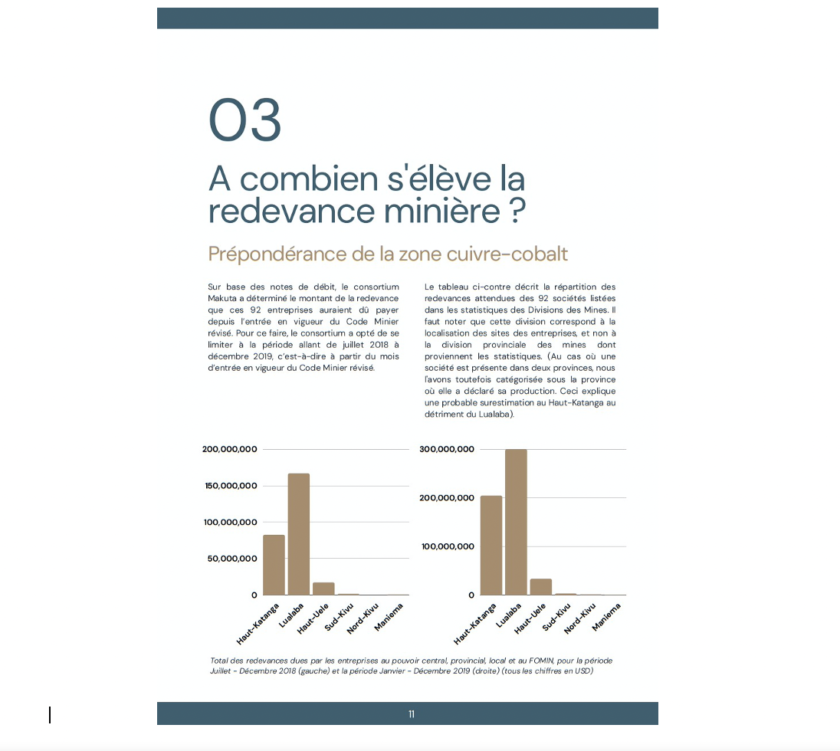
In addition, between July 2018 and December 2019, the DRC’s ETDs were awaiting a financial injection of US $ 121 million in mining royalties, the bulk of which, or 93% according to the aforementioned consortium, went to the provinces of Lualaba and Haut. -Katanga. However, it has remained difficult to identify certain entities which collect these payments, fault or because of bad mapping, according to the same source.
Sometimes, it is downright an imprecise delineation, which causes close entities to compete for the right to collect payments from mining companies that they consider to be established in their homes. In addition, some ETDs, such as the municipality of Dilala in Kolwezi, are forced to share solidarity payments with others. The problem is that this generosity does not allow the entities concerned to ensure that the funds granted to entities at the same level or higher are well managed. And the law did not provide for it. Thus, deplores an official of the administration of a local commune in Kolwezi, certain projects which fall under the responsibility of the city or the province are abandoned to the ETDs who perceive this precious sesame.
Due to the lack of local and municipal elections, the urban and municipal councils, control bodies for the management of ETDs, have not yet been set up. And the heads of ETDs are theoretically not accountable to. In terms of ETD, Haut-Katanga has 34 of which 13 are already receiving payments, indicates a report by the Ong Cordaid (June 2020).
These are the communes of Lubumbashi, Annexe, Kampemba and Ruashi (City of Lubumbashi), the communes of Shituru and Panda (City of Likasi) as well as the chiefdoms of Kaponda (territory of Kipushi), Kiona Ngoy (territory of Mitwaba). ) and Pweto (Pweto territory), as well as the sectors of Lufira (Kambove territory), Bukanda (Kipushi territory), Balamba (Sakania territory) and Basanga (Kambove territory).
This report also identifies the entities benefiting from this royalty in Lualaba. These are mainly the Sector of Luilu in the territory of Mutshatsha, the Chiefdom of Bayeke in the territory of Lubudi, the Commune of Dilala in Kolwezi and the Commune of Fungurume in the territory of Lubudi.
Finally, the decentralized territorial entities of Haut-Katanga, as much as those of Lualaba, should not complain of not having enough money for their functioning and their progressive development. It is the management that is deplorable. And even if it seems that companies do not always pay all they should, the money paid to ETDs should still bring about a considerable change, especially in the education, health and water sectors.
Source; actualite.cd
135 total views , 1 views today


